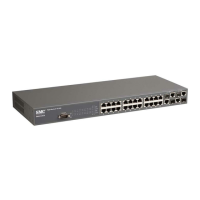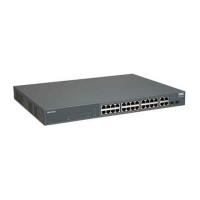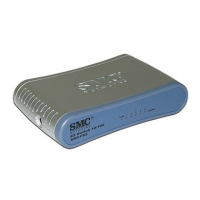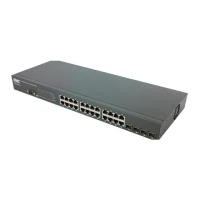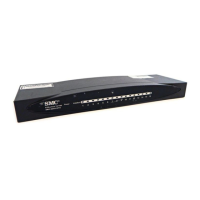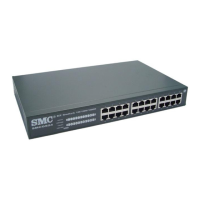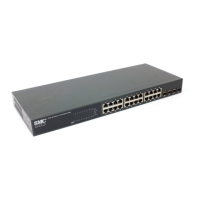C
ONNECTING
TO
THE
S
WITCH
2-4
Notes: 1. When using HyperTerminal with Microsoft
®
Windows
®
2000,
make sure that you have Windows 2000 Service Pack 2 or later
installed. Windows 2000 Service Pack 2 fixes the problem of
arrow keys not functioning in HyperTerminal’s VT100
emulation. See www.microsoft.com for information on
Windows 2000 service packs.
2. Refer to “Line Commands” on page 20-21 for a complete
description of console configuration options.
3. Once you have set up the terminal correctly, the console login
screen will be displayed.
For a description of how to use the CLI, see “Using the Command Line
Interface” on page 18-1. For a list of all the CLI commands and detailed
information on using the CLI, refer to “Command Groups” on
page 18-12.
Remote Connections
Prior to accessing the switch’s onboard agent via a network connection,
you must first configure it with a valid IP address, subnet mask, and default
gateway using a console connection, DHCP or BOOTP protocol.
An IPv4 address for this switch is obtained via DHCP by default. To
manually configure this address or enable dynamic address assignment via
DHCP or BOOTP, see “Setting an IP Address” on page 2-11.
Notes: 1. This switch supports four concurrent Telnet/SSH sessions.
2. Each VLAN group can be assigned its own IP interface
address (page 2-11). You can manage the stack via any IP
interface in the stack. In other words, the Master unit does not
have to include an active port member of a VLAN interface
used for management access.
3. Any VLAN group can be assigned an IP interface address
(page 2-11) for managing the stack. Also, note that the Master
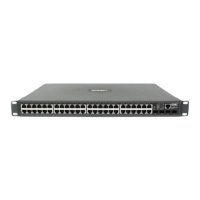
